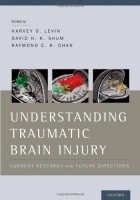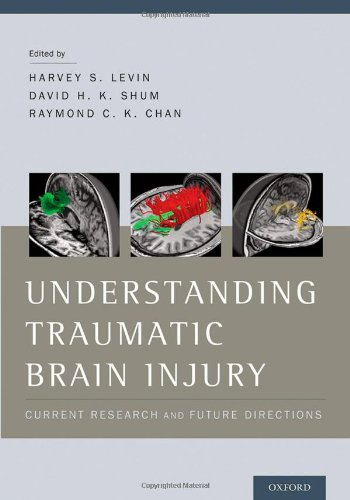 Editors: Harvey S. Levin, David H.K. Shum, Raymond C.K. Chan
Editors: Harvey S. Levin, David H.K. Shum, Raymond C.K. Chan
Publisher: Oxford University Press – 460 pages
Book Review by: Nano Khilnani
It has been estimated by the World Health Organization (WHO) that some 10 million people worldwide are either killed or hospitalized each year due to traumatic brain injury (TBI). This works out to 150 to 300 people per 100,000 affected globally every year.
It is estimated that TBI accounts for fifty percent of all trauma-related deaths in the world. And it is now considered the leading cause of death and disability in young adults.
The most common mechanism of TBI is closed head trauma due to sudden acceleration or deceleration of the head and blunt impact by an external mechanical force. Motor vehicle crashes, falls, assaults and injuries sustained at work or in recreational activities are the most common types of TBI, according to the editors. And males sustain such injuries about one and a half times more than females.
TBI accounts for only 1.4 percent of all visits to the emergency departments of hospitals but 15.1 percent of hospitalizations and a whopping 30.5 percent of all deaths due to injury. A substantial number of individuals sustaining TBI injury require long-term care and financial support. This in turn places a substantial burden on relatives and others, and on health and welfare services.
Because of all these aforementioned facts and circumstances, research and study to treat TBI is extremely important, and this volume makes a significant contribution to that purpose. Of course, also of critical importance is prevention; therefore, the spread of awareness and education in safety and injury-prevention programs is a must as well.
Forty seven specialists in various aspects of traumatic brain injury from four countries – Australia, China, United Kingdom, and the United States – contributed material for the 19 chapters of this book that are organized under six sections, namely:
- Introduction
- Neuropsychological Functions
- Outcomes and Rehabilitation
- Methodological and Technological Advances
- Special Populations
- Future Opportunities and Challenges
While this book provides easy-to-understand information on TBI for anyone of average education and intelligence interested in this subject, it has been developed and written with the needs of these specific groups of people in mind:
- Researchers, physicians, and allied health professionals involved in investigating and treating people with TBI
- Graduate students and senior undergraduate students who are writing assignments or undertaking projects in the area
- Clinicians for whom it can be a bedside or office tool to gain innovative, comprehensive, and current knowledge about the epidemiology or outcome of TBI, including specific, real-world recommendations that will enhance care for the individual with TBI.
Each chapter supplies a voluminous amount of knowledge and insight being imparted by the author(s). In addition, charts, drawings, photos, and tables provide more information, contributing to the understanding of the subject matters being discussed. The lists of Reference materials at the end of the chapters provide further opportunities for you to consult other works and expand and deepen your understanding of any particular topic.
This is a comprehensive, authoritative text.







